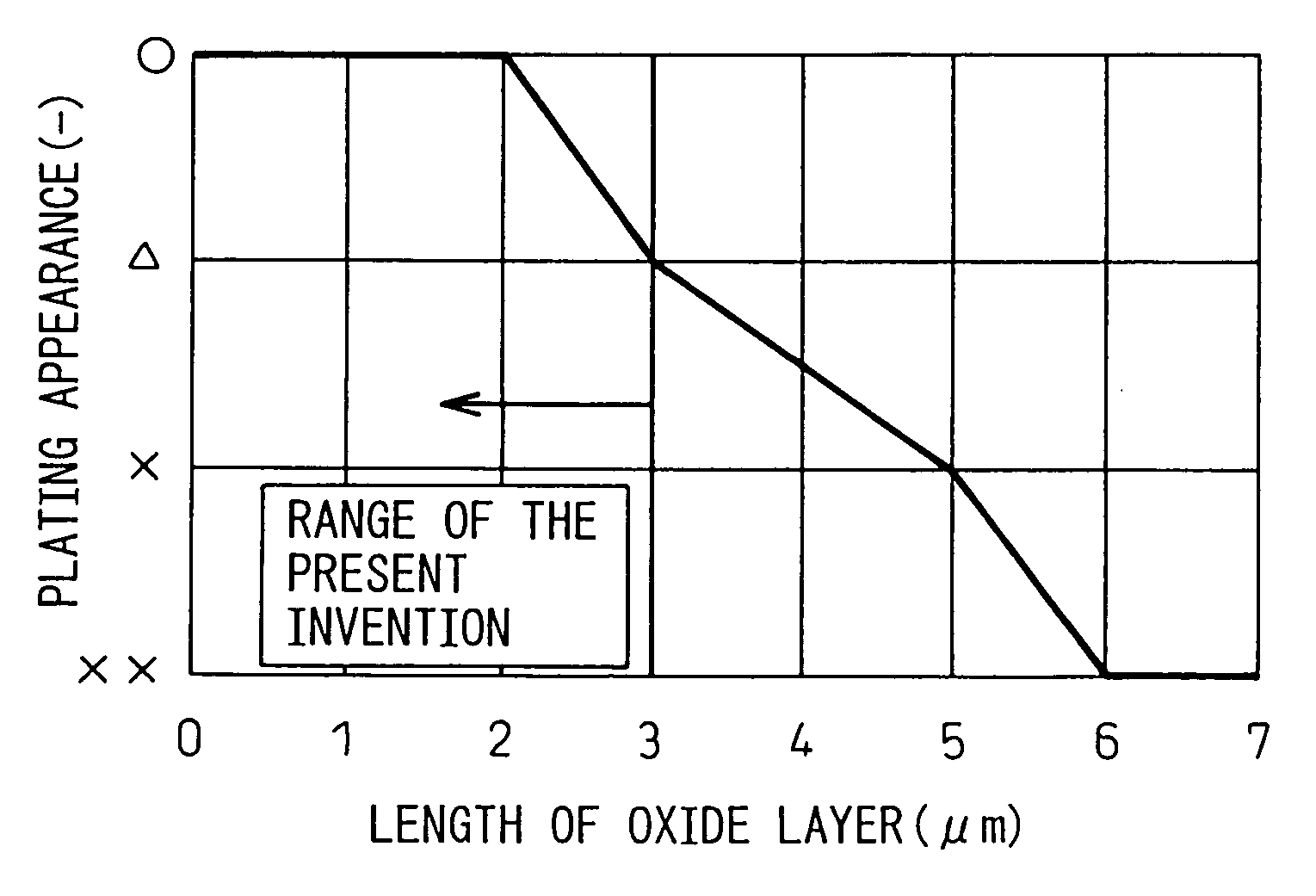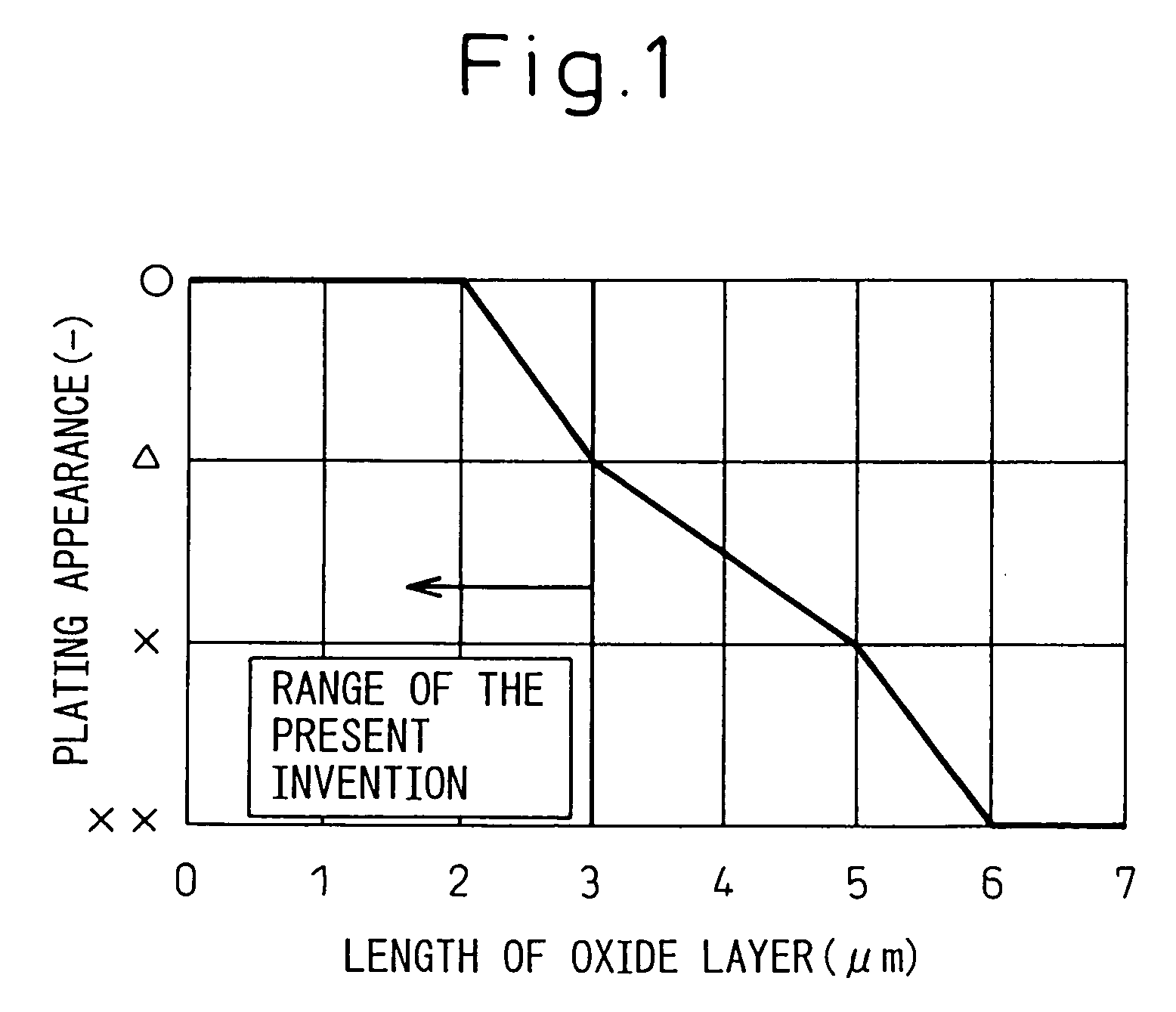High-strength hop-dip galvanized steel sheet and method for producing the same
a galvanized steel and high-strength technology, applied in the field of hotdip galvanized steel sheet, can solve the problems of deterioration of plating appearance, incrassation of steel sheet surface, deterioration of steel sheet plating performance, etc., and achieve excellent workability and surface appearance, high tensile strength
- Summary
- Abstract
- Description
- Claims
- Application Information
AI Technical Summary
Benefits of technology
Problems solved by technology
Method used
Image
Examples
example
Example 1
[0109] Using a hot-dip plating simulator, various kinds of hot-dip galvanized steel sheets were produced by subjecting various steel sheets shown in Table 1 to the processes of: annealing for 100 sec. at 800° C. at a heating rate of 5° C. / sec. in an atmosphere of 8% hydrogen and −30° C. dew point; subsequently dipping in a hot-dip galvanizing bath; and air cooling to the room temperature. Here, a metal composed of zinc containing 0.14% Al was used in a hot-dip galvanizing bath. Further, the dipping time was set at 4 sec. and the dipping temperature was set at 460° C.
[0110] The plating performance of the hot-dip galvanized steel sheets thus produced was evaluated visually. The evaluation results were classified by the marks, ο: no non-plated portion and ×: having non-plated portions. Further, the adhesiveness of hot-dip galvanizing was evaluated by exfoliation of a specimen with a tape after OT bending and the evaluation results were classified by the marks, ο: no exfoliat...
example 2
[0113] Steel sheets were produced by subjecting steels having the components shown in Table 2 to hot rolling, cold rolling, annealing, plating and thereafter skin passing at a reduction ratio of 0.6% under the conditions shown in Table 3. The produced steel sheets were subjected to tensile tests, retained austenite measurement tests, welding tests, plating appearance tests and plating performance tests, those being explained below. Further, when alloyed hot-dip galvanized steel sheets were produced, they were subjected to the tests for measuring Fe concentrations in plating layers. Here, the coating weight on a surface was controlled to 40 g / mm2.
[0114] With regard to a tensile test, a JIS #5 tensile test specimen was sampled and subjected to a tensile test under the conditions of the gage thickness of 50 mm, the tensile speed of 10 mm / min. and the room temperature.
[0115] With regard to a retained austenite measurement test, a plane in the depth of one-fourth the sheet thickness fr...
example 3
[0129] Using a hot-dip plating simulator, various kinds of hot-dip galvanized steel sheets were produced by subjecting cold-rolled steel sheets having the components of the invention example No. 2 in Table 7 to the processes of: annealing for 100 sec. at 800° C. at a heating rate of 5° C. / sec. in the atmospheres shown in Table 8; subsequently dipping in a hot-dip galvanizing bath; and air cooling to the room temperature. Here, an atmosphere at the time of heating was controlled to 4% hydrogen and −40° C. dew point, and a metal composed of zinc containing 0.14% Al was used in a hot-dip galvanizing bath. Further, the dipping time was set at 4 sec. and the dipping temperature was set at 460° C.
[0130] The plating performance of the hot-dip galvanized steel sheets thus produced was evaluated visually. The evaluation results were classified by the marks, ο: a portion having good appearance and no non-plated portion, Δ: a portion partially having small non-plated portions 1 mm or less in ...
PUM
| Property | Measurement | Unit |
|---|---|---|
| temperature | aaaaa | aaaaa |
| temperature | aaaaa | aaaaa |
| temperature | aaaaa | aaaaa |
Abstract
Description
Claims
Application Information
 Login to View More
Login to View More - R&D
- Intellectual Property
- Life Sciences
- Materials
- Tech Scout
- Unparalleled Data Quality
- Higher Quality Content
- 60% Fewer Hallucinations
Browse by: Latest US Patents, China's latest patents, Technical Efficacy Thesaurus, Application Domain, Technology Topic, Popular Technical Reports.
© 2025 PatSnap. All rights reserved.Legal|Privacy policy|Modern Slavery Act Transparency Statement|Sitemap|About US| Contact US: help@patsnap.com



